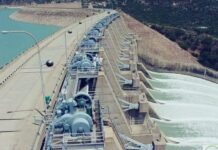Commercial banks have lent a record 98.55% of their total deposits to the government amounting to Rs28.92 trillion by the end of May 2024, according to the monthly update by the State Bank of Pakistan (SBP).
This higher level of lending by the banks to the government left little for private-sector lending, which is essential for economic growth.
As per a news report, the government turned to domestic commercial borrowing to address a revenue shortfall and meet interest payments on existing debt. Consequently, commercial banks borrowed from the central bank to finance the government.
The cost of borrowing from the SBP decreased after the central bank reduced its key policy rate by 150 basis points to 20.5% last week.
Commercial bank financing for the government increased by nearly 44% to Rs28.92 trillion in May 2024, up from Rs20.14 trillion a year earlier.
In contrast, bank financing for the private sector remained stagnant at Rs12.17 trillion, showing an increase of less than 1% from Rs12.07 trillion in May 2023. This resulted in a drop in the banks’ advance-to-deposit ratio (ADR) to 41.46% in May 2024 from almost 50% in May 2023.
Banks generally prefer risk-free lending to the government over financing the private sector, which is essential for economic activities and job creation.
Meanwhile, commercial bank deposits grew over 20% to Rs29.35 trillion in May 2024, up from Rs24.39 trillion in May 2023. This growth in deposits was driven by a rise in workers’ remittances and government borrowing from banks.
Remittances reached a record high of $3.24 billion in May 2024, pushing total inflows to $27.09 billion in the first 11 months of FY24, up 7.7% year-on-year.
Additionally, government borrowing from banks surged by Rs8.78 trillion, or 43.59%, over the past year to Rs28.92 trillion, which mostly remained in the system and continued to reflect in bank deposits.























